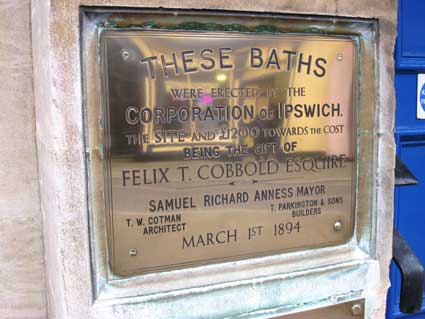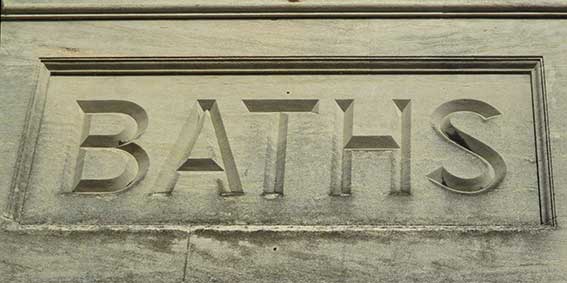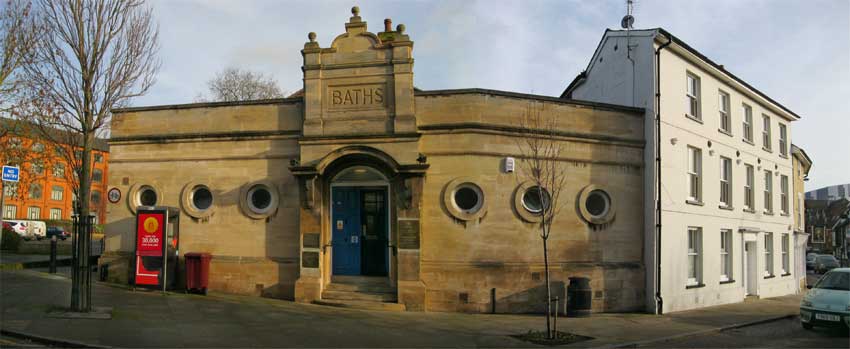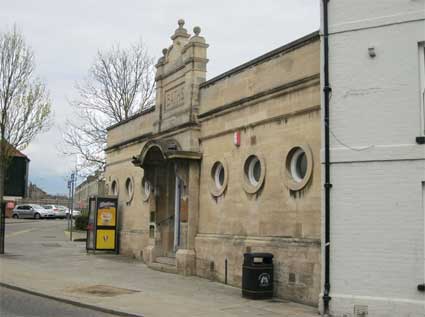Swimming is Britain's most popular participation sport.
Nearly one in five people swim at least once a month, with around 80
million visits to swimming pools recorded every year. But what of the
pools themselves?
Surprisingly, although public baths have formed a vital part of
community life since an 1846 Act of Parliament, their story has never
been told in popular form. See our Reading List
for details of the book 'Great lengths' which documents it.
The book traces the social
and architectural development of indoor public baths and pools, from
the earliest subscription baths of the Georgian period to the current
generation of leisure pools with their flumes and potted palms.
The golden era of pool
design fell between the 1880s and 1914, when over 600 baths were
constructed, many of them rich in architectural detail and
technological innovation. In Manchester, the magnificent Victoria
Baths, completed in 1906 - and in 2003 the winner of BBC Television's
popular Restoration series - set new standards for opulence, with three
separate First and Second class pools for men and women, Turkish Baths,
gorgeous tiling and extensive laundry facilities. Birmingham's Moseley
Road Baths (1907), London's Haggerston Baths (1906) and similar
establishments in Hull, Nottingham and Glasgow equally reflected the
civic pride of their creators, as greater awareness of hygiene and
physical fitness brought safe swimming and recreation to the urban
masses.
A further
burst of
activity between the wars saw a new generation of concrete and glass
Art Deco baths built in London, Birmingham and Liverpool, as well as
Northampton, Wakefield, Rochdale, Crewe and Blackpool. In the 1960s
these were joined by classic Modern designs in Coventry, Crystal Palace
and Edinburgh.

'THESE BATHS
WERE ERECTED BY
THE
CORPORATION OF IPSWICH.
THE SITE AND
£1200 TOWARDS THE COST
BEING THE GIFT OF
FELIX T. COBBOLD
ESQUIRE
-
SAMUEL RICHARD
ANNESS MAYOR
T.W.
COTMAN
ARCHITECT
T. PARKINGTON &
SONS
BUILDERS
MARCH 1ST
1894'
Felix
Thornley Cobbold is one of the great names in the town. Fore Street
Baths is one of several principle features of Ipswich for which he was
responsible, not to mention Christchurch Mansion and Park. He became an
extremely wealthy man, and in common with his forbears used his wealth
generously to benefit the community. He donated to Ipswich, land for St
Clement’s Baths (Fore Street Baths); a clock and carillon for the
nearby St
Clement Church and 45 acres of Gippeswyk Park plus cash for
fencing. In 1894 he purchased Christchurch
Mansion from a syndicate
which proposed to demolish it for redevelopment, and presented it to
the Borough of Ipswich to establish a Museum and Art Gallery as long as
the Borough purchased the surrounding park. In his will left a further
£20,000 in Ipswich Stock, the interest of £600 per year
accruing therefrom to be used for the purchase of artworks. His
patronage of agriculture is continued by the Felix Thornley Cobbold
Agricultural Trust through the award of grants for the betterment of
farming practice in Suffolk and the adjoining counties. (See Links for the Cobbold Family History Trust.) We
believe that he may be commemorated by 'Thornley
Place' facing onto Chevallier Street.
See our Lost trade signs of Ipswich
page for the Grimwade & Ridley building which preceded Fore Street
Baths.
From here it's a short
walk to St Clement Church, Martin
& Newby, the Meremayd, 'Palmer's Door Mats &c.' and The
Unicorn.

 2025 images
2025 images 2014
image
2014
image 2012 image
2012 image
 2025 images
2025 images